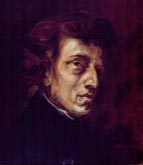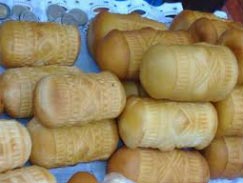|
Participants will have some free time
in Cracow
on 29 August in the late morning (including lunch) at the Bonarka Shopping Mall (www.bonarkacitycenter.pl - far from the city center)
on 30 August in the evening (including dinner).
Suggestions: Old Town or Kazimierz, both interesting from an artistic and cultural point of view and offering many restaurants, cafés and pub.
in Warsaw
on 29 August in the evening (including dinner). Suggestions: Old Town or Nowy Swiat.
on 30 August in the late morning (including lunch) at the Złote Tarasy Shopping Mall
(www.zlotetarasy.pl - in the city center).
Suggestions: Fotoplastikon, for a quick visit, or the new "Museum of the History of Polish Jews" or Nowy Swiat.
and in Wadowice
on 31 August in the late morning (including lunch).
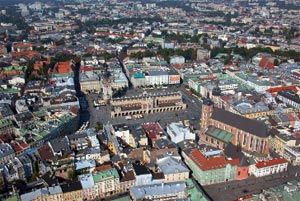 Sigthseeing in Cracow Sigthseeing in Cracow
The city of Krakow, which lies on the banks of the Vistula River, was for centuries the capital of Poland.
Krakow's Old Town, along with Wawel Castle and the city's Kazimierz district (where Steven Spielberg shot "Schindler's List") were placed on the First World Heritage List, created by UNESCO in 1978.
Please note that some important touristic places - such as the Market Place, the Jagiellonian University, Wawel Hill Kazimierz (the Jewish district) and Podgorze (the Jewish ghetto during World War II) - will be part of the filmtour scheduled on Saturday 31 August.
|
Kazimierz district
Kazimierz is a historical district of Kraków, Poland; best known for being home to a significant Jewish community from the 14th century on until the Shoah in the Second World War.
One of the main streets of Kazimierz is Szeroka where several restaurants are located.
Some of them offer concerts of the traditional Jewish Klezmer music.
http://www.youtube.com/watch?v=v51qyz93mig
|
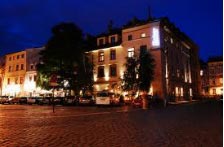 |
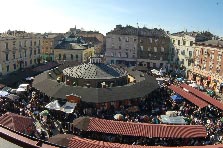 |
Another interesting location is Plac Nowy. |
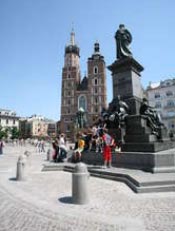 |
St. Mary's Tower - Old Town
Also known as the Straży (Guard), Budzielna (Waking), Alarmowa (Alarm) and Hejnalica (Heynal) Tower, St. Mary's is the only tower in the world from which a trumpeter has played the Heynal (bugle call) to the four quarters of the globe every hour throughout the whole day for over six hundred years.
In order to see and hear these marvels one has to climb 239 steps to the height of 54 metres. St. Mary's trumpeter needs two and a half minutes. |
The Cathedral - Wawel Castle
This building represents an array of epochs and styles. The Gothic structure is surrounded by twenty-one Gothic, Renaissance and Baroque chapels.
37 royal coronations took place in this cathedral and almost all of Poland's kings found their final resting place here. Eminent Polish such as Tadeusz Kosciuszko, Józef Piłsudski, Władysław Sikorski, Adam Mickiewicz and Juliusz Słowacki were also buried in the cathedral crypts. Among the chapels, the most beautiful is the Zygmuntowska (Sigismund's) Chapel, a real Renaissance masterpiece. |
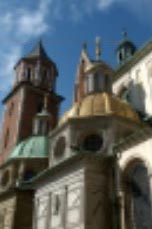 |
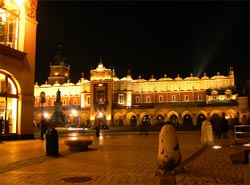 |
Sukiennice - Old Town
The Renaissance Sukiennice (Cloth Hall, Drapers' Hall) in Kraków, Poland, is one of the city's most recognizable icons. It is the central feature of the Main Market Square in the Kraków Old Town (listed as the UNESCO World Heritage Site since 1978). It was once a major centre of international trade. Traveling merchants met there to discuss business and to barter. During its golden age in the 15th century, Sukiennice was the source of a variety of exotic imports from the East - spices, silk, leather and wax - while Kraków itself exported textiles, lead, and salt from the Wieliczka Salt Mine.
|
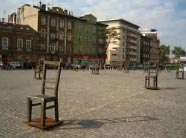 |
Podgórze district
Podgórze includes the site of the Nazi Kraków Ghetto and a factory of Oscar Schindler who saved nearly 1,200 Jews from the camps. |
For more information on the most important attractions, please see:
http://www.krakow.pl/english
Sigthseeing in Warsaw
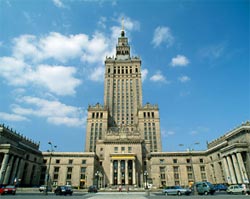 The Palace of Culture and Science The Palace of Culture and Science
The Palace of Culture and Science was built between 1952 and 1955; it was a "gift of the Soviet people to the Polish nation", offered by Joseph Stalin himself. The architect was Lew Rudniew. The Palace is the highest building in Poland, standing at 230.5 m (which is 42 floors) with an area of 817,000 sq.m. and has over 3,000 rooms, including offices, institution headquarters and the Polish Academy of Sciences. Moreover, the Palace has a post office, a swimming pool, museums, libraries and theaters.
It also hosts a cinema: the Kinoteka.
The Congress Hall (Sala Kongresowa) and Concert Hall (Sala Koncertowa) are without a doubt among the most important concert halls in Poland.
The Congress Hall has seen numerous prestigious acts of guest artists over the years, such as Marlene Dietrich, Procol Harum, Bruce Springsteen, Cesaria Evora, The Rolling Stones, Woody Allen with his band and many other international artists.
The visit of Kinoteka is part of the course programme.
The Campanile Hotel is not far from the Palace of Culture and Science.
This area is considered to be the centre of Warsaw.
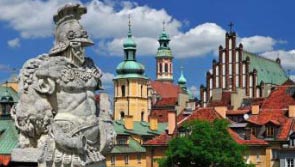 |
The Old Town (Stare Miasto)
The oldest part of the city. Founded in the 13th century as the prince's castle, it is surrounded by walls.
During World War II, 90% of it was destroyed, but thanks to its restoration and recovery, in 1980 it was placed in the UNESCO World Heritage List.
|
|
Museum of the History of Polish Jews
The Museum of the History of Polish Jews opened its doors to the public in April 2013.
The Museum stands in what was once the heart of Jewish Warsaw and it currently functions as a cultural and educational centre with a rich cultural program, including temporary exhibitions, films, debates, workshops, performances, concerts, lectures and much more.
The opening of the Core Exhibition, presenting the thousand-year history of Polish Jews, is scheduled for the beginning of 2014.
It is located in the same area of the Monument to the Ghetto Heroes (Pomnik Bohaterów Getta).
6 Anielewicza St., 00-157 Warsaw.
|
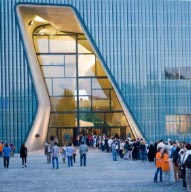 |
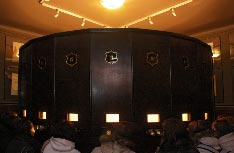 |
Fotoplastikon
The Warsaw Fotoplastikon, built in the early 20th century, is the only one in Poland - and one of the very few in the world - that is still in perfect working condition. Its archives have over 3,000 original photographs from Warsaw and around the globe.
It is located just in front of Złoty Tarasy. The visit lasts about 20 minutes and costs 1 euro.
www.fotoplastikonwarszawski.pl
|
Chopin's Warsaw
The most important attractions related to the life of Fryderyk Chopin are Holy Cross Church (kościół Św. Krzyża), where his heart is interred, the cutting-edge biographical museum, which opened on the 200th commemoration of the composer's birthday, and the memorial in Łazienki Park, where recitals of Chopin's music are held every Sunday afternoon from May to September. |
|
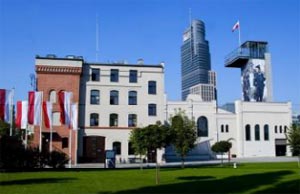 |
Warsaw Rising Museum
Opened in 2004, on the 60th anniversary of the outbreak of the Warsaw Uprising, the museum pays tribute to those who died for Polish independence.
Housed in a former tramway station, the modern museum guides visitors through interactive displays, video footage and photographs.
www.1944.pl |
How to reach Nowy Swiat and the Old Town from Campanile Hotel
Tram connects the hotel to Rondo De Gaulle'a, in the area of Nowy Swiat (shops and restaurants). From Nowy Swiat, continuing on Krakowskie Przedmieście, it is possible to reach the Old Town (Stare Miasto).
How to reach Campanile Hotel from Warsaw airport
Bus 175 connects the Hotel to Warsaw airport.
For more information on the most important attractions, please see:
http://www.warsawtour.pl/en
Sigthseeing in Wadowice
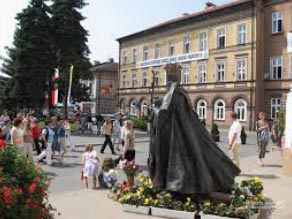 |
Wadowice, a city of the Malopolska area, is the home town of Pope John Paul II. |
Polish cuisine
 |
Polish pierogi, stuffed with cabbage and meat, sprinkled with fried, chopped onion and Polish sausage (kielbasa). You can also have Polish pierogi with sweet cottage cheese filling or stuffed with a variety of fruits: strawberries, bilberries, cherries. |
|
Oszczypek is a smoked cheese made of salted sheep milk exclusively in the Tatra Mountains region of Poland. Since 2007 Oscypek is a protected trade name under the EU's Protected Designation of Origin geographical indication. |
|
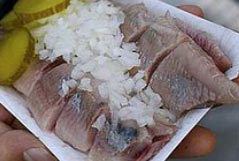 |
Herring is one of Poland's favorite appetizers.
|
|












